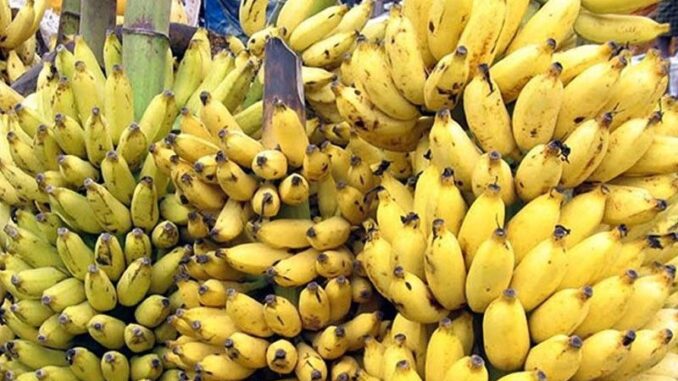
MANILA, Philippines — The Department of Agriculture (DA) is stepping up its programs, from credit assistance to preferential tariff agreements, to help the banana industry get back on its feet amid persisting production woes and stiffer competition abroad with foreign producers.
Agriculture Undersecretary for high-value crops Cheryl Marie Natividad-Caballero told The STAR that the DA continues to support ongoing research endeavors to yield a Panama disease-resistant banana variety.
Natividad-Caballero said there are ongoing field trials for the Panama disease-resistant planting materials in various provinces nationwide including in North Cotabato, Lanao del Norte, Davao del Sur and Agusan del Norte in Mindanao.
There are also field trials in Samar and Leyte in the Visayas and in Apayao, Cagayan, Quezon and Oriental Mindoro in Luzon.
Panama disease or Fusarium wilt has been the main problem causing headaches and production woes to local banana growers.
Banana industry players estimate that Panama disease has affected at least 17,000 hectares so far.
“This disease has led to reduced yields and increased production costs, making it difficult for Philippine bananas to compete on price and quality with those from other countries,” Natividad-Caballero said.
The DA is providing credit assistance for farm rehabilitation and establishment of new farms to expand banana production, Natividad-Caballero said.
She added that the DA is targeting to meet the industry’s requirement of at least P450,000 per hectare of credit assistance.
The official said the agency is also encouraging more farms to engage in research innovation to enhance banana crop nutrition and integrated pest management.
The DA is also enhancing its support of small-scale banana farmers by providing them with biological controls to prevent infestation and assistance to help them secure Philippine Good Agricultural Practices certifications.
The DA said it would continue to increase its budget allocation for the high-value crops program where bananas are covered.
The higher funding would be used to bankroll tissue culture centers that would produce quality banana planting materials.
The DA also stands ready to allow Fusarium wilt-affected farmers to diversify to other crops such as Hass avocados and durian to provide livelihood and promote sustainability and economic resilience.
The government will also strengthen its efforts in pushing for beneficial free trade agreements that will slash tariffs levied by trading partners on the country’s banana exports, effectively leveling the playing field against foreign suppliers.
“The export status of Philippine bananas in key markets such as Japan, South Korea, and China highlights both opportunities and challenges for the industry, especially in light of increasing competition from neighboring Asian countries,” Natividad-Caballero said.
Experts have identified that some of the reasons behind the dwindling banana industry include increased foreign competition from neighboring countries, production challenges, quality concerns and tariff disadvantages.
International Trade Centre (ITC) data showed that the country has lost nearly 11 percentage points of market share in South Korea from January to August.
The Philippines also lost almost 13 percentage points of market share in China from January to July versus the same period last year.
With the latest figures, the country’s share in South Korea’s banana market is now down to 60 percent, while in China it currently accounts for 24.5 percent.
The Philippines lost its six-year status as the second biggest exporter of bananas despite reversing its sagging trend in shipments in 2023 after being overtaken by Guatemala, according to the United Nations’ Food and Agriculture Organization.
The Philippines saw its banana exports recover last year to 2.35 million metric tons, up by 3.5 percent from 2.27 million MT in 2022.


Be the first to comment